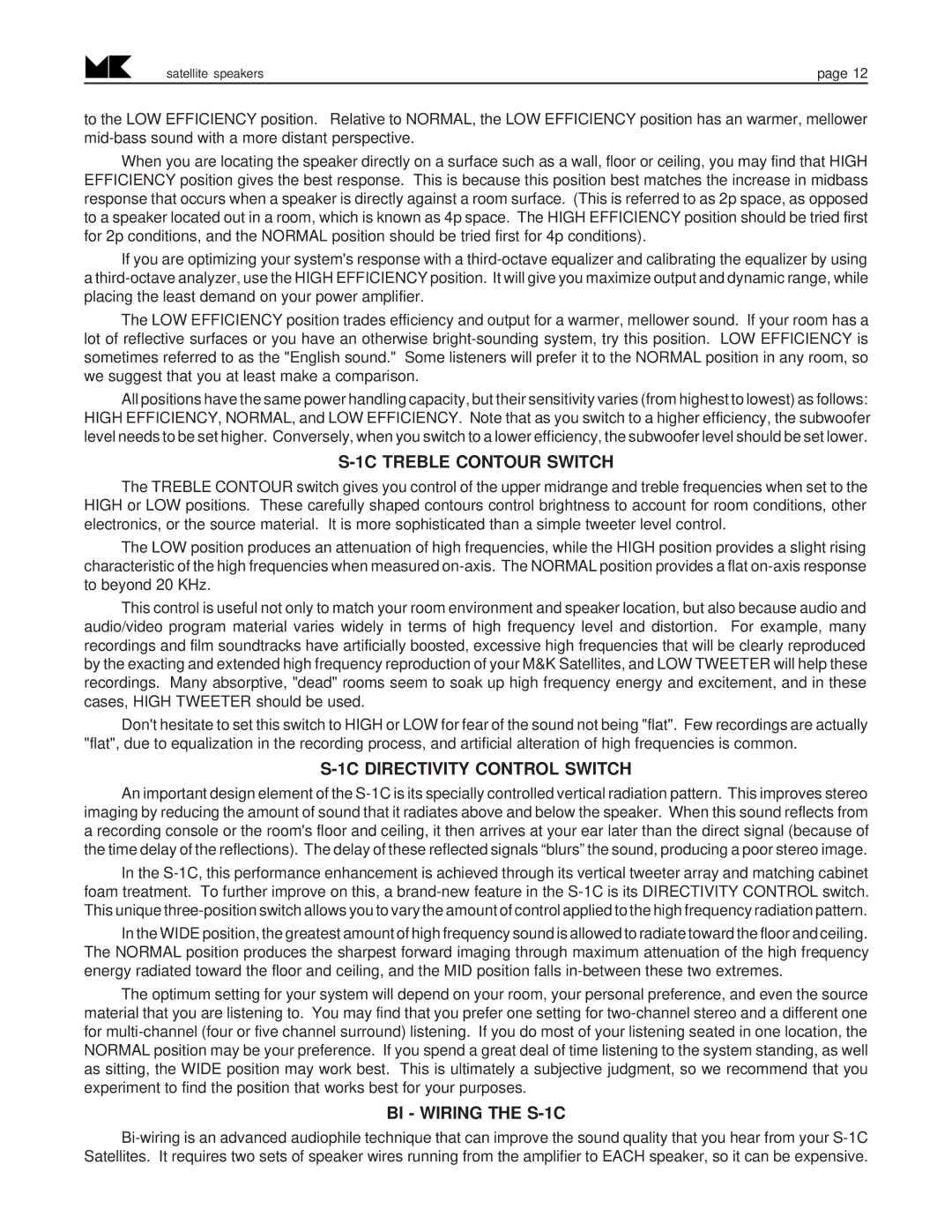S-80 SX-7, S-90, S-1C specifications
MK Sound has long been a name synonymous with high-quality audio solutions, and their product lineup, including the S-1C, S-90, S-80, and the SX-7, showcases the brand's commitment to delivering exceptional audio performance. Each of these models has been engineered with specific technologies and characteristics that cater to both audiophiles and casual listeners alike.The MK Sound S-1C is a compact center speaker designed to deliver clear vocal reproduction and an engaging soundstage. It features a high-quality 1-inch tweeter and dual 5.25-inch woofers that work in unison to provide a balanced sound profile. This model excels in dialogue clarity, making it an essential component for home theater setups. The S-1C also boasts a frequency response that extends down to 70 Hz, ensuring it can adequately reproduce lower frequencies for a fuller sound experience.
Moving on to the S-90, this floor-standing speaker is a testament to MK Sound's dedication to performance and precision. It features a 1-inch tweeter and three 5.25-inch woofers, allowing for a powerful bass response and detailed high frequencies. With a frequency response of 40 Hz to 20 kHz, the S-90 is designed to fill larger rooms with immersive sound. The speaker's high sensitivity level allows it to produce loud volumes without distortion, making it an excellent choice for music and movie enthusiasts.
The S-80 is another stellar offering, designed as a versatile bookshelf speaker. Like the S-90, it features a 1-inch tweeter paired with dual 5.25-inch woofers. With a compact design, the S-80 can easily fit into smaller spaces while still delivering a wide soundstage and impressive audio fidelity. Its frequency range extends from 45 Hz to 20 kHz, ensuring a broad sonic spectrum. The elegant cabinet design also integrates acoustic dampening technologies to minimize distortion and enhance sound quality.
Finally, the SX-7 is an advanced subwoofer that reinforces MK Sound’s commitment to low-frequency performance. It includes a powerful 12-inch driver and a built-in amplification system that delivers deep, impactful bass. With a frequency response extending down to 25 Hz, the SX-7 is perfect for users seeking a cinematic experience at home. Its adjustable crossover and phase control features allow users to tailor the subwoofer’s performance to their specific room and listening preferences.
In summary, MK Sound’s S-1C, S-90, S-80, and SX-7 represent a harmonious blend of innovative technology and exceptional sound reproduction. Each model is crafted to not only meet but exceed the expectations of discerning audio enthusiasts, making them a powerful addition to any sound system.
